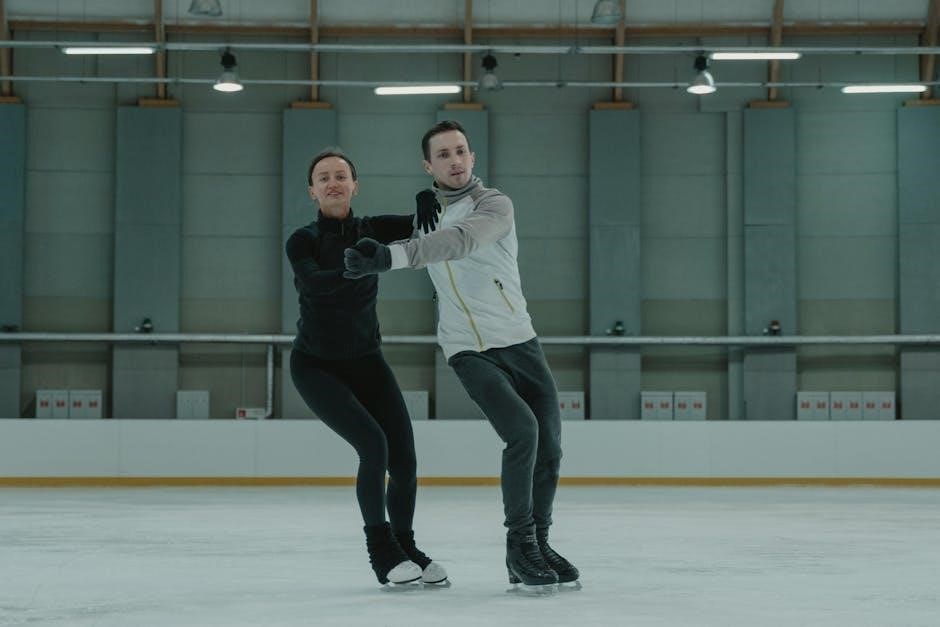
meniscus exercises pdf
Meniscus exercises are crucial for regaining knee motion and strength after an injury. A PDF guide provides detailed instructions and visuals, ensuring proper form and progression. Consistency is key for optimal recovery.
1.1 Understanding the Meniscus and Its Importance
The meniscus is a cartilage structure in the knee joint that plays a vital role in absorbing shock, stabilizing the joint, and facilitating smooth movement. It consists of two C-shaped discs—the medial (inner) and lateral (outer) menisci—that cushion the bones and distribute weight evenly. Injuries to the meniscus can lead to pain, swelling, and limited mobility. Understanding its function is essential for effective rehabilitation. The meniscus acts as a protective buffer, reducing friction during activities like walking, running, or pivoting. Damage to this cartilage can disrupt normal knee mechanics, making daily activities challenging. Exercises targeting the surrounding muscles help compensate for meniscus damage, promoting joint stability and reducing pain. A clear understanding of the meniscus’s role is the foundation for developing an effective exercise program to restore knee health and prevent further injury.
1.2 The Role of Exercises in Meniscus Rehabilitation
Exercises play a cornerstone role in meniscus rehabilitation by restoring knee function, strength, and mobility. They help improve joint stability, reduce pain, and prevent further injury. Early exercises focus on strengthening the quadriceps and hamstrings, which support the knee joint. Progression to more advanced movements enhances flexibility and endurance. Consistency in performing these exercises is critical for optimal recovery. A structured exercise program, often detailed in a meniscus exercises PDF, provides clear guidance on proper techniques and progression. These routines are tailored to address specific needs, ensuring a safe and effective rehabilitation process. By adhering to a well-designed exercise plan, individuals can regain normal knee function and return to daily activities and sports. Regular practice also helps maintain long-term joint health and reduces the risk of recurring meniscus issues.
1;3 Benefits of Using a PDF Guide for Meniscus Exercises
A PDF guide for meniscus exercises offers a comprehensive and accessible resource for rehabilitation. It provides clear instructions, visuals, and step-by-step directions, ensuring proper form and technique. These guides often include illustrations of exercises like quad sets, straight-leg raises, and hamstring curls, making them easy to follow. A PDF guide allows users to track their progress, set realistic goals, and maintain consistency, which is essential for recovery. It also serves as a convenient reference, enabling individuals to perform exercises at home without specialized equipment. Additionally, a PDF guide can be easily shared with healthcare providers for feedback, ensuring a personalized approach to rehabilitation. By offering a structured and visual program, it empowers individuals to take an active role in their recovery, promoting faster healing and long-term joint health.
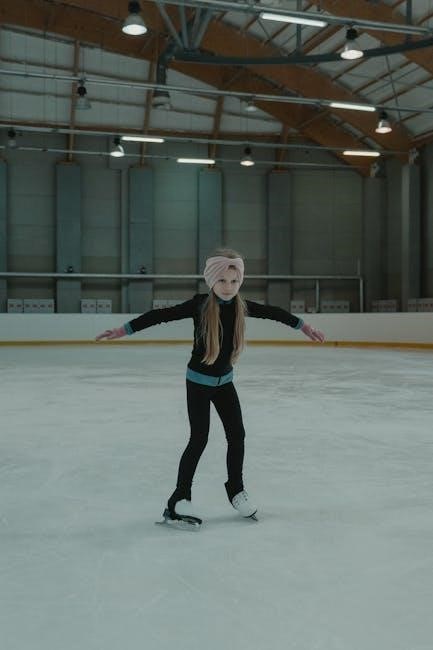
Key Exercises for Meniscus Rehabilitation

Quad sets, straight-leg raises, and hamstring curls are essential exercises for meniscus rehabilitation. They improve knee strength, stability, and flexibility, aiding in a full recovery and preventing future injuries.
2.1 Quad Sets and Their Impact on Knee Strength
Quad sets are a foundational exercise for meniscus rehabilitation, targeting the quadriceps muscles to improve knee strength and stability. By contracting the quadriceps without moving the knee, this exercise helps restore muscle function and reduces atrophy. Patients often begin with quad sets in the early stages of recovery, as they can be performed without putting stress on the injured meniscus. Proper form involves tightening the thigh muscles and holding the contraction for several seconds before releasing. Consistency with quad sets enhances knee extension and prepares the joint for more advanced movements. Incorporating quad sets into a daily routine supports the healing process and lays the groundwork for progression to weight-bearing exercises, ensuring a stronger and more stable knee post-rehabilitation.
2.2 Straight-Leg Raises for Knee Stability
Straight-leg raises are essential for improving knee stability and strength without putting direct stress on the meniscus. This exercise involves lying on your back, bending the unaffected leg, and slowly lifting the affected leg while keeping it straight. It targets the quadriceps and hip flexors, enhancing muscle control and joint stability. Proper form is key: lift the leg to the height of the bent knee, hold for a few seconds, then lower slowly. Starting without resistance and gradually incorporating an ankle weight (1-5 pounds) can increase effectiveness. Straight-leg raises are particularly beneficial in the early stages of rehabilitation, as they promote healing without risking further injury. Consistency with this exercise helps restore functional movement and prepares the knee for more dynamic activities, making it a cornerstone of meniscus recovery programs.
2.3 Hamstring Curls to Support the Knee Joint
Hamstring curls are a vital exercise for strengthening the muscles at the back of the thigh, which play a crucial role in supporting the knee joint. This exercise helps improve knee stability and reduces the strain on the meniscus during movement. To perform a hamstring curl, lie on your stomach with your knees straight, then bend your knees to bring your heels toward your buttocks, holding for a few seconds before lowering your legs slowly. This movement can be done without weights or with resistance bands or ankle weights for added intensity. Strengthening the hamstrings helps balance the muscle forces around the knee, providing additional protection to the meniscus. Consistent practice of hamstring curls, especially in conjunction with other exercises, is essential for restoring knee function and preventing future injuries.
Advanced Exercises for Meniscus Recovery
Advanced exercises like heel raises, shallow knee bends, and wall squats enhance mobility and strength, building on earlier progress to support long-term knee health and stability.
3.1 Heel Raises to Enhance Mobility
Heel raises are an effective exercise for improving ankle and calf mobility, which indirectly supports knee stability. Start by standing on the edge of a stair or platform with your heels hanging off. Slowly raise your heels as high as possible, then lower them back down; Repeat for 3 sets of 15-20 repetitions. This exercise strengthens the calf muscles and enhances flexibility. For added challenge, perform single-leg heel raises or incorporate resistance bands. Proper form is essential to avoid strain. Begin with 2-3 sessions per week and gradually increase intensity. Consistency in this exercise helps restore mobility and reduces the risk of future injuries, making it a valuable addition to your meniscus recovery routine.

3.2 Shallow Standing Knee Bends for Controlled Movement

Shallow standing knee bends are an excellent exercise for improving knee mobility without putting excessive strain on the joint. Stand with your feet shoulder-width apart and hands on your thighs for support. Slowly bend your knees to a slight angle, ensuring your back remains straight and your weight is evenly distributed. Avoid deep bends, especially in the early stages of recovery, to prevent discomfort or injury. Hold the position for 5 seconds before returning to the starting position. Perform 3 sets of 10-15 repetitions. This exercise helps restore range of motion and strengthens the quadriceps and hamstrings, which are crucial for knee stability. Progress gradually, increasing the depth of the bend as your strength and flexibility improve. Consistency with this exercise will enhance your knee’s functional ability and support overall recovery.
3.3 Wall Squats to Improve Flexibility
Wall squats are an effective exercise for improving flexibility and strengthening the muscles around the knee joint. Stand with your back against a wall and your feet about 12 inches away from the wall. Slowly slide down the wall, bending your knees to a 45-degree angle, and hold for 10 seconds. Return to the starting position and repeat for 3 sets of 10 repetitions. This exercise targets the quadriceps, hamstrings, and calves, enhancing joint mobility. To increase difficulty, you can wear a resistance band around your thighs. Focus on maintaining proper form and avoiding pain. As you progress, gradually increase the hold time to 15-20 seconds. Wall squats are particularly beneficial for improving flexibility and reducing stiffness in the knees, making them an essential part of meniscus rehabilitation. Consistency with this exercise will help restore normal knee function and promote long-term joint health.
Prevention of Future Meniscus Injuries
Avoiding high-impact activities, strengthening surrounding muscles, and proper warm-up techniques are key to preventing future meniscus injuries. Consistency in these practices ensures long-term knee health and stability.
4.1 Avoiding High-Impact Activities
Avoiding high-impact activities reduces stress on the meniscus, minimizing tear risks. Activities like jogging or deep squats should be limited, especially post-surgery; Gentle exercises and low-impact sports are safer alternatives, promoting knee health without excessive strain.
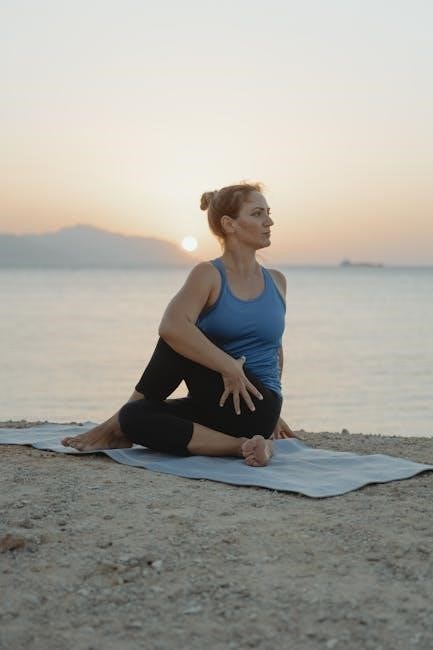
4.2 Strengthening the Surrounding Muscles
Strengthening the muscles around the knee is essential for meniscus health. Focus on exercises like quad sets, straight-leg raises, and hamstring curls to build strength and stability. These exercises target the quadriceps and hamstrings, which play a crucial role in supporting the knee joint. Progress gradually, starting without weights and adding resistance as strength improves. Consistency is key to enhancing joint stability and reducing the risk of future injuries. Strong surrounding muscles help absorb shock and distribute force more evenly, minimizing stress on the meniscus. Regular exercise also improves flexibility and endurance, promoting long-term knee health. Use a PDF guide for detailed instructions and visuals to ensure proper form and progression. Over time, stronger muscles will provide better support and reduce the likelihood of meniscus damage, helping you maintain an active lifestyle with confidence.

4.3 Proper Warm-Up and Cool-Down Techniques
A proper warm-up and cool-down are vital for preventing injuries and aiding recovery. Begin with dynamic stretches, such as leg swings and knee bends, to prepare the muscles and joints for activity. Light cardio, like cycling or walking, can also increase blood flow and flexibility. After exercise, cool down with static stretches to reduce muscle tension and improve flexibility. Incorporate gentle movements and breathing exercises to promote relaxation. Foam rolling or self-myofascial release can further aid in muscle recovery. A well-structured warm-up and cool-down routine helps protect the meniscus by ensuring the surrounding muscles are prepared for and recovered from physical stress. Consistency in these practices is key to maintaining knee health and preventing future injuries. Use a PDF guide to follow detailed routines and ensure proper technique throughout your exercises.
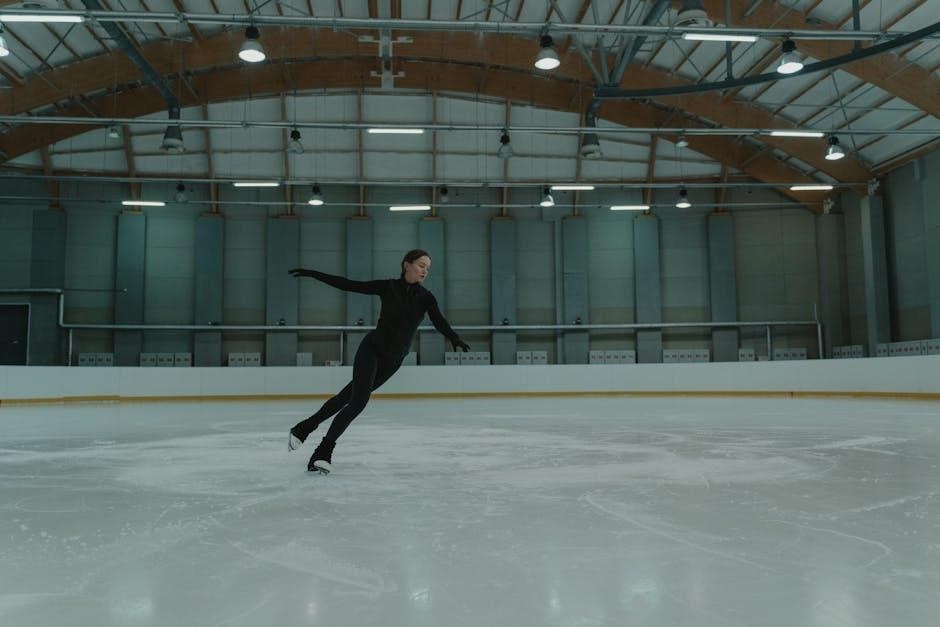
Rehabilitation Phases
Rehabilitation progresses through phases: early post-operative (0-6 weeks), intermediate (6-12 weeks), and advanced (3-6 months). Each phase focuses on gradual strengthening, flexibility, and functional recovery to ensure proper healing and knee stability.
5.1 Early Post-Operative Phase (0-6 Weeks)
The early post-operative phase focuses on pain management, swelling reduction, and basic mobility. Immobilization with a plaster splint or brace is often recommended for 7-10 days to protect the knee. Patients begin with gentle exercises like straight-leg raises and heel slides to maintain range of motion without stressing the repair. Weight-bearing activities are limited, and crutches may be necessary. Ice therapy is frequently used to reduce inflammation. Patients are advised to avoid deep squats, pivoting, or high-impact movements during this period. The goal is to allow the meniscus to heal while preventing stiffness. Regular follow-ups with a healthcare provider are essential to monitor progress and adjust the treatment plan as needed.
5.2 Intermediate Phase (6-12 Weeks)

In the intermediate phase, the focus shifts to strengthening and improving flexibility. Patients progress to more dynamic exercises, such as shallow standing knee bends and wall squats, to enhance controlled movement. Resistance exercises, like straight-leg raises with ankle weights, are gradually introduced to build strength. Activities that avoid deep knee flexion or pivoting are emphasized to protect the healing meniscus. Patients may begin using exercise bands for added resistance in exercises like side stepping. Continued use of knee braces or supports is common to provide stability. The goal is to restore functional movement and prepare for more advanced activities. Patients are encouraged to progress slowly, avoiding high-impact movements until cleared by their healthcare provider. Monitoring progress and adjusting the exercise program as needed remains critical during this phase.
5.3 Advanced Phase (3-6 Months)
During the advanced phase, the focus transitions to enhancing functional strength and preparing for a return to normal activities or sports. Exercises like heel raises, wall squats, and side stepping with resistance bands are intensified. Patients progress to more complex movements, such as controlled pivoting and light jogging, under supervision. The goal is to restore full knee function and confidence. High-impact activities are reintroduced cautiously, ensuring the meniscus can withstand the stress. Strengthening exercises are continued, with a focus on sport-specific movements. Monitoring progress and adjusting the exercise program remains essential. Patients are encouraged to maintain a consistent routine and avoid overexertion. This phase is critical for achieving long-term recovery and preventing future injuries. Ongoing physical therapy support is often recommended to ensure proper technique and progression.
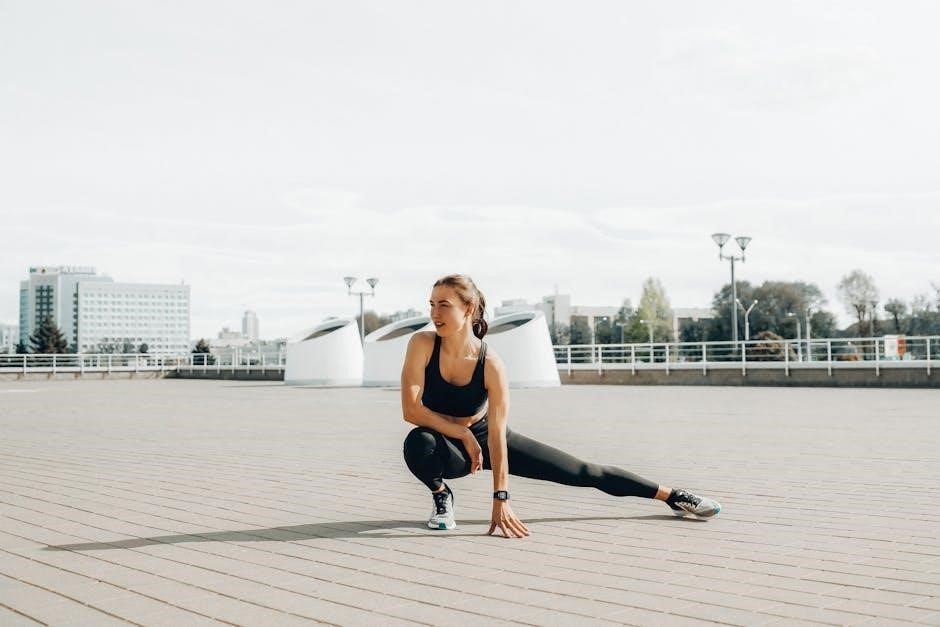
Additional Therapies and Aids
Additional therapies like knee braces, electrical myostimulation, and ice therapy support meniscus recovery. These aids enhance stability, reduce inflammation, and promote muscle healing, complementing exercise routines effectively.
6.1 Use of Knee Braces for Support
Knee braces provide essential support during meniscus recovery, especially in the early stages. They help stabilize the knee joint, reducing stress and discomfort. By limiting excessive movement, braces allow the meniscus to heal without further irritation. They are particularly beneficial for individuals engaging in light physical activities or during the initial phases of rehabilitation. Additionally, braces can offer psychological reassurance, helping patients feel more secure as they regain strength and mobility. Proper fitting is crucial to avoid restricting natural movement or causing discomfort. Braces are often recommended in conjunction with exercises, creating a comprehensive approach to recovery. They are a valuable tool in preventing reinjury and promoting a smooth transition back to normal activities.
6.2 Electrical Myostimulation for Muscle Recovery
Electrical myostimulation (EMS) is a non-invasive technique that uses electrical impulses to stimulate muscle contractions, aiding in muscle recovery and strength. It is particularly beneficial for patients who cannot perform active exercises due to pain or limited mobility. EMS helps prevent muscle atrophy, improves circulation, and accelerates the healing process. Studies have shown that EMS can enhance muscle function and reduce recovery time after meniscus surgery. It is often used in conjunction with other therapies, such as physical therapy and ice therapy, to maximize effectiveness. EMS is especially useful for targeting the quadriceps and hamstrings, which are critical for knee stability. However, it should be used under professional guidance to ensure proper application and avoid overstimulation. This therapy is a valuable addition to a comprehensive rehabilitation program, promoting faster and more efficient recovery.
6.3 Ice Therapy for Reducing Inflammation
Ice therapy is a simple yet effective method to reduce inflammation and alleviate pain after a meniscus injury. By applying ice to the affected area, blood flow is restricted, which helps minimize swelling and discomfort. It is recommended to use an ice pack wrapped in a cloth to avoid direct contact with the skin, as this can cause burns. Apply ice for 15-20 minutes, 3-4 times daily, especially during the acute phase of recovery. Consistent use of ice therapy can significantly accelerate the healing process and improve overall comfort. This technique is often combined with other treatments, such as rest and compression, to enhance its effectiveness. Always consult a healthcare provider before starting any new therapy to ensure it aligns with your specific rehabilitation plan.
Consistency in rehabilitation is vital for recovery. Downloadable PDF guides offer comprehensive exercise plans and expert advice, ensuring a structured approach to healing and preventing future injuries effectively.
7.1 Summary of Key Exercises and Techniques
The essential exercises for meniscus rehabilitation include Quad Sets, Straight-Leg Raises, and Hamstring Curls, which target knee strength and stability. Advanced techniques like Heel Raises, Wall Squats, and Shallow Standing Knee Bends enhance mobility and flexibility. These exercises, detailed in PDF guides, emphasize proper form and progression. Many guides recommend using resistance bands or ankle weights for added resistance. Consistency is crucial, as is avoiding high-impact activities during recovery. The exercises are often paired with therapies like ice therapy and electrical myostimulation for optimal healing. Downloadable PDF resources provide clear instructions and illustrations, ensuring a structured approach to rehabilitation. By following these techniques, individuals can effectively support their meniscus recovery and reduce the risk of future injuries.
7.2 Importance of Consistency in Rehabilitation
Consistency is vital for effective meniscus rehabilitation. Regular performance of prescribed exercises ensures steady progress and prevents setbacks. Irregular or skipped sessions can hinder recovery, leading to prolonged healing times or incomplete restoration of knee function. Adhering to a structured routine, as outlined in PDF guides, helps maintain proper form and avoids overexertion. Progression should be gradual, with resistance and intensity increased only as tolerated. Early post-operative phases require strict adherence to avoid re-injury, while later stages focus on rebuilding strength and flexibility. Consistency also enhances the effectiveness of complementary therapies like ice therapy and electrical myostimulation. Over time, this dedication promotes long-term knee health and reduces the likelihood of future meniscus-related issues, ensuring a successful return to normal activities and sports.
7.3 Recommended PDF Guides and References
Several PDF guides are available to aid in meniscus rehabilitation, offering detailed exercise instructions and illustrations. These resources often include quad sets, straight-leg raises, and hamstring curls, essential for rebuilding strength. Guides like “Meniscal Tear Exercises” and “Knee Rehabilitation Protocol” provide structured programs tailored to different recovery phases. They emphasize progression, suggesting the use of ankle weights and resistance bands for advanced stages. References to studies by authors like FS Bakhtiozan and DG Skvortsov highlight the importance of immobilization and arthroscopic treatments. These PDFs also cover prevention strategies, such as avoiding high-impact activities and strengthening surrounding muscles. They serve as valuable tools for patients and therapists, ensuring comprehensive and effective recovery. Downloading these guides can provide clear, visual instructions to support a successful rehabilitation journey.